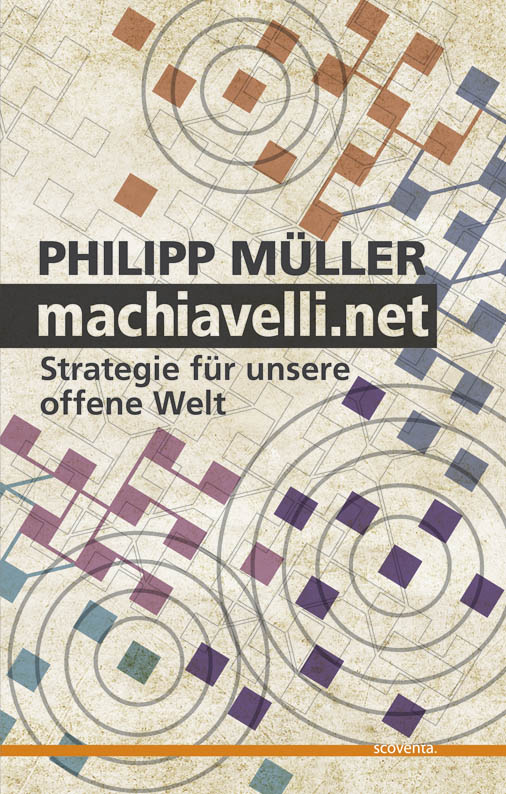Ignoring the ROI of Openness
I am back from Berlin, where we were discussing at the google collaboratory how to evaluate the impact of open government. While the excitement about enterprise 2.0, government 2.0, and open government has been building, critical voices in organizations have questioned the return on investment (ROI) of such projects. 2.0 projects are often still looked upon as insignificant or superfluous. The now classical response to this has been to allude to the ROI of successful projects:
This approach of utilizing the ROI framework to defend 2.0-strategies, however, has several flaws, (a) it might have been a lucky shot, (b) it might not be sustainable, (c) contests might not focus on what citizens need (d) any impact below a certain threshold, let’s say $ 1 billion does not carry weight in big governmental or corporate organizations, but (e) most importantly, ROI is the wrong tool to evaluate success of enterprise/government 2.0 projects, because most of the value is accrued with the consumer not the producer of the value.
If we look at the most successful 2.0 projects of the last years, we see a pattern, where the ROI is not a relevant indicator to evaluate the project. One of the first big 2.0 projects, Wikipedia, destroyed the encyclopedia industry, but is not generating major revenues. Couchsurfing and sites like http://airbnb.com/ or http://www.crashpadder.com/ are taking big bites out of the Hotel industry without generating equivalent returns. Open Street Map is having a huge impact on the mapping industry, one of the most profitable industries of the last years. Dynamic ridesharing is creating a secondary mobility infrastructure in most countries, basically competing with our complex integrated public transport systems such as the German Railway, with revenues of more than 10 billion euro in passenger transport per year or shorthaul flights. The combined revenues of the 5 major German ride sharing companies is way less than $ 10 million, but the impact on the lifeworld of their users is dramatic.
There are three lessons to be gleamed from this:
- the impact of 2.0 project are not to be evaluated in ROI, but in consumer-focused metrics (shadow prices, counterfactuals, reduction in average cost, rate of demonetarization, etc.). Ideally, not in monetary terms, because 2.0-strategies aim to de-monetarize.
- for corporations, 2.0 strategies go way beyond “normal” cannibalization strategies. They focus on the de-monetarization of industries. Therefore, as strategists, we need to ask, how can we generate a revenue flow that does not inhibit adoption, but sustains the effort.There is no choice, either we do it, or someone else will do it.
- For public value strategists that are not entrenched in existing practices this is a dream-come-true. You can now recreate a multi-billion-dollar infrastructure (the German railway system) with a web-page.
If this does not sound like a fun scenario from the perspective of an existing organization (be that governmental or private), be assured that there is nothing you can do against it. The two mega-trends driving the development are the dematerialization of the economy which has been going on for over one hundred years (the weight of the US economy per dollar of GDP has been decreasing more than 100-fold in the last century) and the implosion of transaction costs of organization through digitization and the rise of n-to-n (peer-to-peer) media are leading to new forms of organization (open value chains) and new products and services that can be digitally provided at basically zero marginal costs.
An analogy of what is happening today can be seen, when we look at the historical institution of medieval knighthood, probably the most expensive and sophisticated approach to individualized fighting and organization of social and cultural life in the history of humanity. In 1386, at the battle of Sempach, a “web-startup” consisting of Swiss peasants defeated the Austrian knights, by pushing them down from their high horses by using long poles. Not very sophisticated, but sufficient to get the job done. Expect more of that today.
When in Berlin, I also had breakfast with Peter Scheufen, the CEO of Skobbler, a smartphone navigation company that was globally the first to utilize Open Street Map in its core navigation product and that is making the navigation industry very nervous. Peter sees his role as a negotiator between the world of the voluntary mappers, software developers that might want to build applications on top of his server offering, and consumers that expect a working navigation product for as close to free as possible, and believes he can build a business model where he can generate a non-intrusive revenue stream for his company. Navigating these waters is not easy, but it can be very rewarding for all of us, who believe we can have a positive impact on this planet and generate revenues, by figuring out how to generate revenue streams that do not disturb the value chain. So, ignore the ROI-issue and focus on the big picture of (public) value creation!
 Author of machiavelli.net, proud father of three, interested in shaping network society. Welcome to my blog.
Author of machiavelli.net, proud father of three, interested in shaping network society. Welcome to my blog.
Good points, Philipp. And good arguments, why OpenXXX / Web2.0 is best served in government business. There is a broad consensus that the administration has not to view on turnover or margin while defining and offering its services.
Already years ago, the administration has experienced difficulties to prove the “efficiency” of the first “classic” E-Government (1.0) services. This “efficiency” can not be detected within a horizon only looking at the borders of the current administration, because the real benefit
regularly lays beyond this horizon, namely at side of citizen and company premises. (and, by the way, the corresponding “effectiveness” can as well not be detected, due to the still missing metrics, indicators and instruments to quantify and measure them).
As long as we do not include returns on quality or ROIs with an economy scope in the efficiency analysis for government offerings, all short-sighted ROI calculations with the scope of only organizational returns will fall short.
So, the trouble of hard to quantify returns and short falling ROI calculations for “new” Government 2.0 offerings isn't something really new for administrations. Well, in addition to take more qualitative benefits (eg through improved service levels) or economic
quantifiable benefits into account and into the ROI equations, there is an additional benefit dimensions, especially for Government 2.0: the democracy-strengthening returns.
I believe there be should at least some few empirical studies, whether and to what extent this benefit dimension is verifiable and tangible and can therefore be made interesting for politicians.
Because ROI of Government 2.0 primarily pays not within administration but in politics, future events, awareness-rising activities and all “missionary work” for Government2.0
should primarily target this group, which – at least in theory – is the contracting and sponsoring body for the administration and all of it's modernization efforts.
Dear Thomas, thank you for drilling down and clarifying the argument! I love your idea of thinking in “benefit dimensions” and believe we can build a framework on it. Some ideas from the retweets:
@semantrack “Governments should not evaluate in terms of ROI but in rate of de-monetarization”
@jonathan_rubin Mueller: Can't use ROI to evaluate success of #socmed, because the value is for the consumer, not producer
anyone else jumping into the debate?
Nice blog you got there, Sir! :) Great to meet you at Munich party.
Pingback: L’opendata dans tous ses états – Juillet III «
Very thought provoking.
What a huge and beautiful challenge: “figure out how to generate revenue streams that do not disturb the value chain.” I think this contrasts with a) generating revenue streams by obstructing the value chain (US farm subsidies or copyright) and b) generating revenue streams by not disturbing the old value chain (protected local/ national manufacturing for local consumption).
Your examples are brilliant. I would even add Netflix’s video streaming as an instance of a company embracing the new value chain first, and figuring out how to monetize it later!
However, I disagree with ignoring the ROI-issue. You are right, ROI does not measure public value, but only myopic individual return (let’s call it, I-ROI, individual return on investment). But we still need a metric for individual return if we are interested in generating revenue! Instead of ignoring it, I suggest we couple I-ROI with the public impact of investment or P-IOI. (A new challenge here: how to measure P-IOI? You already make several suggestions above. Perhaps we can expand in a new post…)
If P-IOI is negative, no amount of I-ROI will make the equation positive for society. If P-IOI is positive, then a balance must be found for the right I-ROI. Perhaps government 2.0 should seek to maximize P-IOI, whereas enterprises 2.0 need to strike a different balance.
Interestingly, as an aside, the “social enterprise” sector (e.g. microfinance) is facing similar debates between maximizing social contribution and maximizing capital return…
Dear Philipp, I love your examples. They clearly depict why ROI doesn’t encompass all dimensions of value -and I’d stick to that position, since the semantics of value within ROI force one to think within the logics and dynamics of monetarized value. Whereas, as you already point, the logics and dynamics of succesful 2.0 projects are either concentrated on knowledge or demonitarized benefits. Hence I propose to we use value network analysis as a tool. This method is being used by global players, e.g. Cisco, and it does not only demonetarize value, but is also able to provide a multi-layered perspective of value and costs both on the side of the producer and consumer. As far as I know, this approach with e-government is at the beginnig (I only know of a paper of 2 scholars on 2009 -I’ve just sent you the paper by email)
Dear Lorena, great point – would love to see a full-blown guest blog from you on the issue. Thank you for the super-interesting paper. One thing I wonder about when looking at value web/network thinking is in how far it is still built on Coase’ian/Olson’ian assumptions (on transaction costs, free riding, collective action dilemmas). That’s where I would love to read your thinking on my entry on Coase, Horkheimer/Adorno, Olson and Schelling: http://www.philippmueller.de/c-h-a-o-s-and-the-open-value-chain/